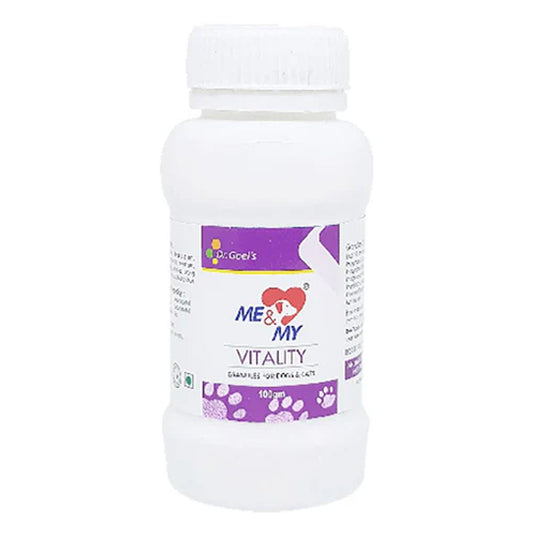
Heat Stress in Pets: Understanding the Risks and Preventive Measures
Heat stress in pets can have severe consequences on their health and well-being. Unlike humans, dogs release heat primarily through panting and limited sweating through their paw pads and nose. When they are unable to cool themselves adequately, their internal body temperature begins to rise, leading to a condition known as hyperthermia or heat stress. It is crucial to recognize the signs of heat stress in pets and take immediate action to prevent heat stroke, which can be life-threatening.
Hyperthermia in pets is typically considered abnormal or hyperthermic when their body temperature exceeds 103°F (39.4°C). Heat stroke occurs when body temperatures rise above 106°F (41.1°C) without any previous signs of illness and is often associated with exposure to excessive external or environmental heat. Temperatures ranging from 107°F to 109°F (41.7°C to 42.8°C) can result in multiple organ failure or even death.
Several factors can predispose pets to heat stress and increase their risk of developing heat stroke. These factors include:
1. Hot and humid environments with inadequate ventilation.
2. Insufficient shade and shelter.
3. Inadequate access to drinking water.
4. Excessive exercise or physical activity.
5. Prolonged exposure to heat sources such as hair dryers.
6. Poorly ventilated environments or dog houses.
7. Brachycephalic breeds (e.g., pugs, boxers, bulldogs) with restricted airways.
8. Dogs wearing muzzles that restrict panting.
9. Increased muscular activity, such as seizures or severe muscle spasms.
10. Obesity in pets.
11. Breathing difficulties or respiratory diseases.
12. Cardiovascular diseases.
13. Neurological diseases.
14. Younger or older animals.
15. Thick or long hair coat.
Awareness of the early signs of heatstroke in pets is essential, as prompt intervention can be life-saving. The initial indications may include restlessness, seeking shade, increased vocalization, and difficulty breathing. Measuring the rectal temperature of a pet can help determine if heat stress is present, with a range of 104-106 degrees Fahrenheit indicating heat stress and temperatures exceeding 106 degrees Fahrenheit suggesting heat stroke.
When a dog appears to be overheated, immediate actions should be taken to cool them down and prevent further complications. The following steps can be taken:
- Move the pet to a shaded or air-conditioned area.
- Place the pet on a cool surface, such as a shaded concrete or tile floor.
- Offer small sips of water but avoid forcing the pet to drink.
- Keep the pet in the cool environment for approximately 20 minutes.
If the pet continues to exhibit abnormal behaviors, such as panting, restlessness, or other signs of distress, even after 30 minutes in a shaded or air-conditioned area, it is crucial to seek veterinary attention. Veterinarians can assess the pet’s condition, perform a temperature check, and provide appropriate treatment, including supportive care, tests, or observation until the signs of heatstroke have resolved.
The signs of heatstroke can vary depending on the severity of the condition. Early signs may include panting, restlessness, drooling, red gums or tongue, increased heart rate, and vomiting or diarrhea. As heatstroke progresses, more advanced symptoms such as lethargy, confusion, weakness or collapse, seizures, and unconsciousness can occur.
In cases of heatstroke, immediate first aid is crucial before seeking professional veterinary care. The following steps can be taken while preparing to transport the pet to a veterinary clinic:
- Move the pet to a cooler area or shade.
- Apply ice packs or cold towels to the pet’s head, neck, and chest.
- Alternatively, gently pour or hose cool water over the pet’s body. It is important to avoid using ice-cold water as it can constrict blood vessels and hinder the pet’s ability to cool down. Excessive cooling can also lead to shivering, which generates more heat.
- Place a cool, wet towel over the pet’s body, ensuring to change it every five minutes to maintain its effectiveness.
- Offer small amounts of cool water for the pet to drink or let them lick ice cubes to hydrate.
- Contact a veterinarian immediately for further guidance and inform them about the situation. Even if the pet appears to be recovering, it is crucial to have them examined by a professional to assess any potential internal damage or complications.
Preventing heatstroke in pets is always better than treating it. Here are some preventive measures to safeguard your pet’s well-being during hot weather:
- Never leave your pet in a parked car, even for a short period. The temperature inside a vehicle can rise rapidly, leading to life-threatening conditions. On an 85-degree day, the temperature inside a car with slightly opened windows can reach 102 degrees within 10 minutes and 120 degrees within 30 minutes. Spread awareness about the dangers of leaving pets in hot cars and take action or seek help if you witness such situations.
- Be mindful of the humidity levels as it affects pets’ ability to cool themselves. High humidity prevents proper evaporation of moisture from their lungs, hindering the cooling process. Pay attention to both the ambient temperature and humidity when assessing your pet’s heat stress risk.
- Adjust the intensity and duration of exercise according to the temperature. On hot days, limit physical activity to the early morning or evening cooler hours. Take extra precautions with pets that have white ears, as they are more susceptible to skin cancer, and short-nosed breeds that may struggle with breathing in extreme heat.
- Avoid walking your dog on hot asphalt as it can burn their paw pads. Opt for grassy areas instead.
- Ensure ample shade and fresh, cold water are always available for your pet indoors and outdoors. Tree shade and tarps can provide effective protection without impeding airflow. Avoid using a doghouse as it can trap heat and worsen the situation.
- Consider providing additional cooling measures for your pet, such as DIY popsicles made with pet-friendly ingredients or cooling mats, wraps, or vests that can be soaked in cool water to keep them comfortable.
- Familiarize yourself with the signs of heatstroke mentioned earlier and regularly monitor your pet for any abnormal behaviors or symptoms during hot weather.
- Prepare for power outages by creating a disaster plan to keep your pets safe. Have backup measures in place to ensure their well-being in case of electricity failures.
The prognosis for pets with heatstroke depends on several factors, including the extent and duration of hyperthermia and the pet’s overall health condition. Swift action and immediate treatment increase the chances of a positive outcome. However, some pets may experience permanent organ damage or develop complications even after initial recovery. Hyperthermia can also make pets more susceptible to future heat strokes.
Veterinarians play a vital role in treating pets with heatstroke. They are trained to assess the severity of the condition and provide emergency medical care. Upon examination, they may administer intravenous fluids, cooling treatments, supplemental oxygen, and medication as necessary. Blood tests may be conducted to evaluate organ function, and ongoing monitoring and treatment may be required.
In cases of hyperthermia or heatstroke, controlled reduction of body temperature is crucial. Veterinarians may employ various cooling methods, such as pouring cool water, using cool wet cloths, or applying alcohol to the footpads. However, the use of ice packs is controversial due to the potential to reduce blood flow to the skin surface. Intravenous fluids, mild sedation, and low-concentration oxygen therapy are commonly employed in heatstroke treatment. The pet’s rectal temperature will be continuously monitored, and the cooling measures will be discontinued once the temperature falls to a safe range or when signs of recovery are evident.
Educating pet owners about the dangers of heatstroke and the preventive measures they can take to ensure their pet’s safety is essential. Promote awareness through flyers, online resources, and community initiatives to spread the message about the risks of leaving pets in parked cars. Encourage responsible pet ownership by emphasizing the importance of providing adequate shade, fresh water, and suitable exercise routines during hot weather.
Additionally, pet owners should be aware of the susceptibility of certain breeds to heatstroke, such as brachycephalic breeds with restricted airways. They should take extra precautions, including avoiding strenuous activities during peak heat hours and providing additional cooling measures to keep their pets comfortable.
Regular veterinary check-ups are crucial, especially for pets with underlying health conditions or those at higher risk of heatstroke. Vets can provide guidance on managing heat stress and offer recommendations tailored to each pet’s specific needs.
Advocacy for legislation and policies can be influential to reinforce the importance of preventing heat stress in pets. Laws that prohibit leaving pets unattended in vehicles during hot weather, stricter regulations on animal welfare, and requirements for proper outdoor housing with shade and ventilation can help protect pets from heat-related dangers. Encouraging policymakers to prioritize animal welfare and establish guidelines for pet owners can contribute to creating a safer environment for our furry companions.
Heat stress and heatstroke pose significant risks to pets, particularly in hot and humid environments. Recognizing the signs of heatstroke and taking immediate action are vital for the well-being of our furry companions. By implementing preventive measures, such as avoiding high temperatures, providing adequate shade and water, and understanding the specific needs of different breeds, pet owners can help ensure their pets stay safe and healthy during hot weather. Remember, the best approach is always prevention, but swift veterinary intervention is crucial for a positive outcome if heatstroke does occur.
Raising awareness about heat stress in pets is essential to ensure that pet owners understand the risks and know how to prevent such incidents. Local communities, veterinary clinics, and animal welfare organizations can collaborate to organize awareness campaigns, distribute informational brochures, and utilize various media platforms to spread the message. Engaging social media, public service announcements, and community events can effectively reach a wide audience and convey vital information.
Education plays a crucial role in preventing heat stress in pets. Pet owners should be educated about the factors that contribute to heat stress, such as leaving pets in hot cars, inadequate access to shade and water, and excessive exercise during peak heat hours. Providing practical guidelines on how to keep pets cool, such as limiting outdoor activities during the hottest parts of the day, providing fresh water at all times, and using cooling techniques like damp towels or pet-specific cooling products, can significantly reduce the risk of heat stress.
Furthermore, it’s important for pet owners to understand that heat stress can occur not only in outdoor settings but also indoors. High temperatures, especially in poorly ventilated or confined spaces, can lead to heat buildup and discomfort for pets. Therefore, it is essential to create a cool and comfortable environment for pets within the home as well.
In conclusion, heat stress and heatstroke are serious threats to the well-being of pets
With the knowledge and understanding of the risks involved, pet owners can take proactive measures to prevent heat-related issues and ensure their pets remain safe and comfortable during hot weather. Through public awareness campaigns, community involvement, veterinary guidance, and the implementation of appropriate legislation, we can ensure that pet owners have the knowledge and resources needed to protect their beloved companions. By working together, we can safeguard our furry friends from the dangers of heat stress and create a safer and healthier environment for them, especially during the hot.
HOMEOPATHIC SOLUTION FOR STRESS & ANXIETY
STRESSZA FOR PETS STRESS AND ANXIETY
STRESSZA for pets is an excellent remedy for treating Anxiety, Stress, and Canine Distemper. When your fur baby is unanimously scratching, barking, hiding behind, feeling anxious, eating nothing, even sometimes behaving wild or attacking unknowingly, etc. these all symptoms may be due to Anxiety and Stress or due to various causes of Canine Distemper. We have the best solution to all your problems, We have STRESSZA is a unique homeopathic veterinary formulation to relieve stress in pets.
Stressza for pets works for Stress due to Traveling, Crackers in Festive Season, Fighting with stray dogs, Home alone, Visiting Hospital for Vaccination, etc.
ME & MY VITALITY SUPPLEMENT FOR STRESS & ANXIETY
This is a unique supplement for pets experiencing extreme lassitude (inactiveness), depression, nervousness, irritability, hysterical behavior, night terror, insomnia, and other related symptoms. 









